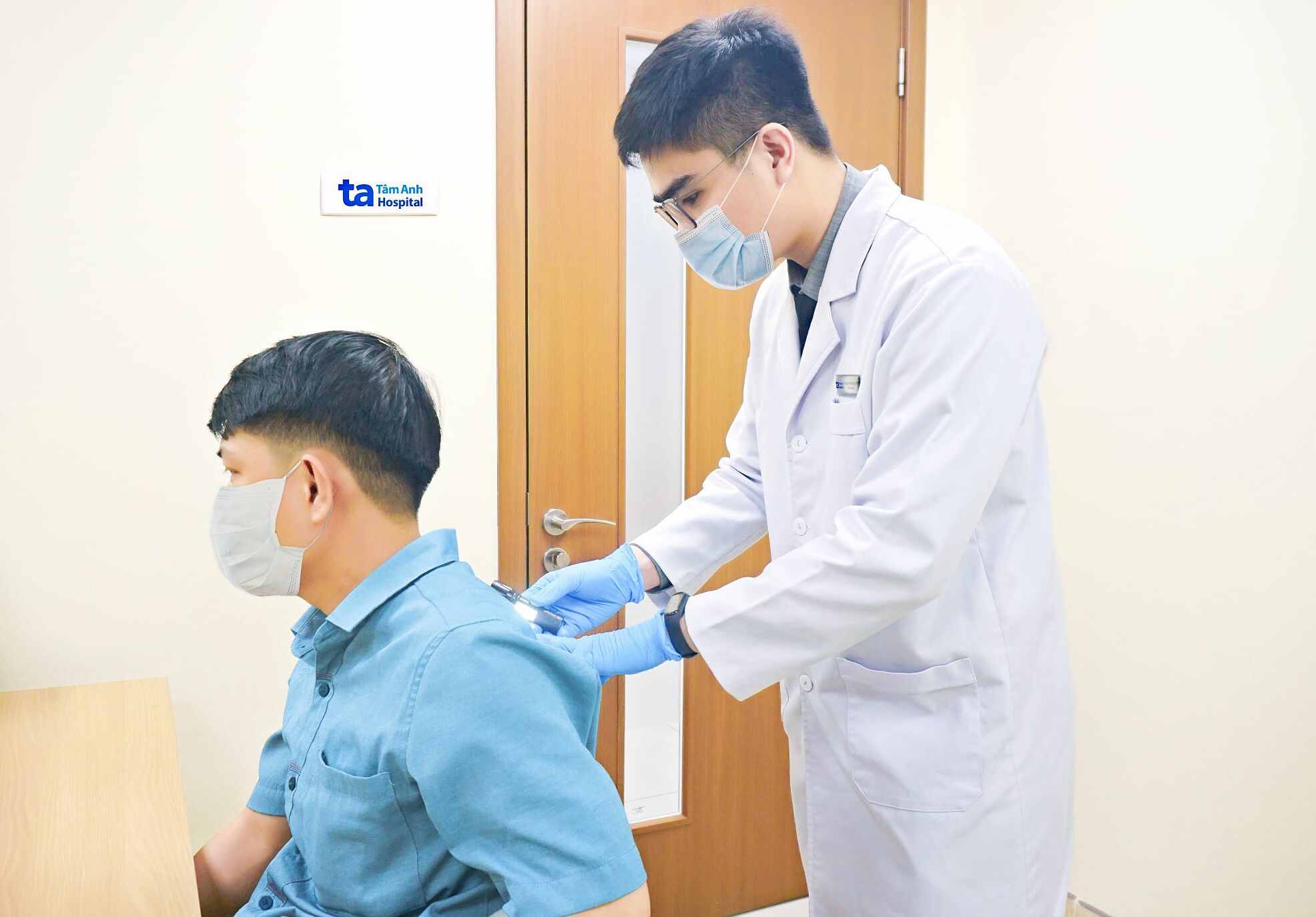Doctor Huynh Cong Tri, from the Dermatology - Cosmetic Dermatology Unit at Tam Anh General Clinic, District 7, examined Binh and noted 7 raised scars on his back, arms, and buttocks, ranging in size from 2x3 cm to 5x8 cm.
Doctor Tri prescribed treatment with triamcinolone injections, a corticosteroid that can soften, reduce the size of raised scar tissue, and alleviate redness and itching. Triamcinolone helps regress raised scars through various mechanisms, including suppressing inflammatory responses, reducing collagen and glycosaminoglycan synthesis, and inhibiting fibroblast proliferation. The medication is diluted with saline to achieve the appropriate concentration and injected directly into the scar tissue.
Binh’s treatment plan consisted of 5 injection sessions, spaced one month apart. After the treatment area was numbed and disinfected, the doctor injected the medication directly into the scar tissue. Each injection point was spaced about 1 cm apart to ensure even distribution of the medication.
After one injection, Binh experienced a 50% reduction in itching and pain. After 4 injections, the scar thickness decreased by about 60-70%, with some areas almost completely flattened.
 |
Doctor Tri assesses the treatment's effectiveness. Photo: *Tam Anh General Hospital* |
Raised scars are bumpy, elevated scars that form due to excessive fibrous tissue growth during wound healing. When the skin is injured, fibrous tissue forms to repair and fill the damaged area. However, in some individuals with specific predispositions, this fibrous tissue grows excessively, creating a hard mass that pulls on surrounding tissue and continues to enlarge even after the wound has healed. These scars tend to develop slowly, spreading over weeks, months, or even years. In some cases, raised scars can grow rapidly, tripling in size within a few months.
Raised scars can occur at any age and on any part of the body but are most common in areas subject to tension, such as the shoulders, chest, upper back, back of the neck, front of the sternum, and earlobes. The incidence of raised scars is significantly higher during pregnancy and puberty.
Tam Anh General Hospital System treats approximately 300 cases of raised and hypertrophic scars each month, primarily during the itching and redness phase. Triamcinolone injection is one of the most commonly used and effective non-surgical treatments for raised scars. In many cases, doctors may combine pulsed dye laser therapy, Botox injections, or cryotherapy with liquid nitrogen to enhance the reduction of itching and improve scar appearance. However, even after treatment, there is a risk of recurrence within the first few years.
Doctor Tri advises individuals prone to raised scars or those with a family history of this condition to be cautious in their skincare to prevent scar formation after skin injuries or surgery. They should limit unnecessary invasive procedures like ear piercing, tattoos, or cosmetic surgery. Self-treating raised or hypertrophic scars with folk remedies, such as applying mole removal medications or herbal remedies, is not recommended. Individuals with raised scars should seek consultation and treatment from a dermatologist or cosmetic dermatologist to reduce the risk of worsening scars or developing complications.
All skin wounds, even minor ones, should be carefully cared for from the outset, following a doctor's instructions to promote rapid healing and minimize the risk of raised scar formation.
Duc Tri
| Readers can submit questions about dermatology and cosmetic dermatology here for doctors to answer. |












